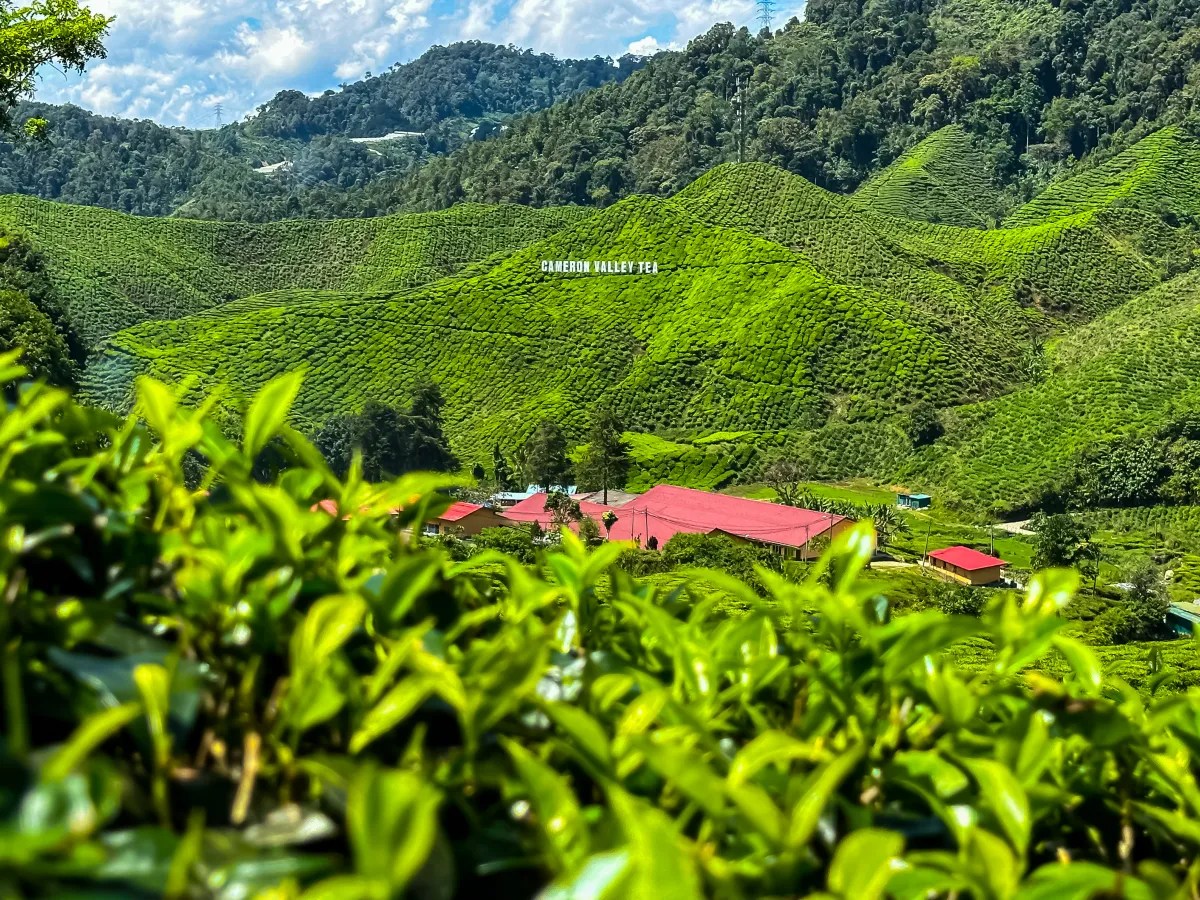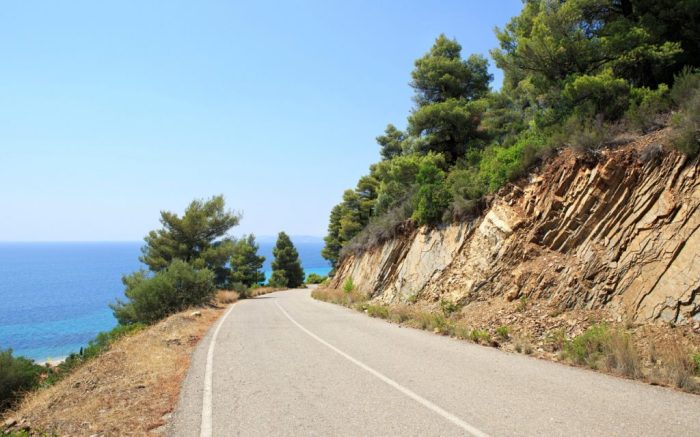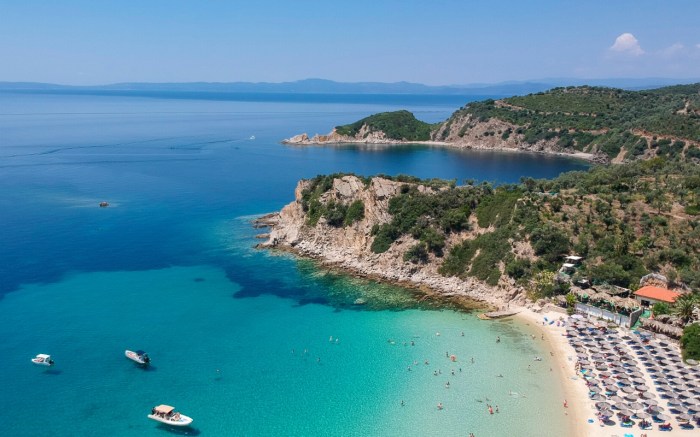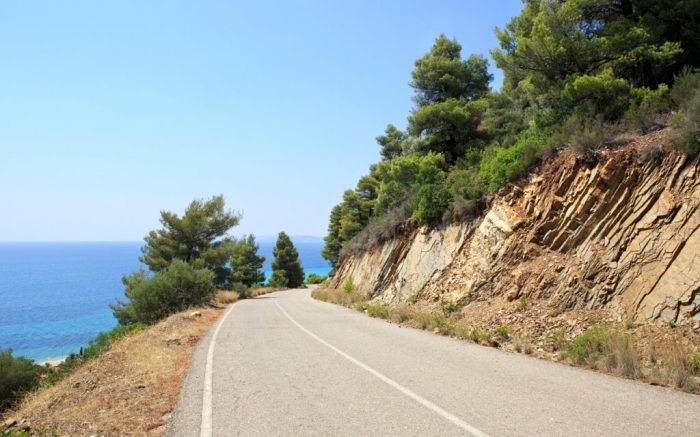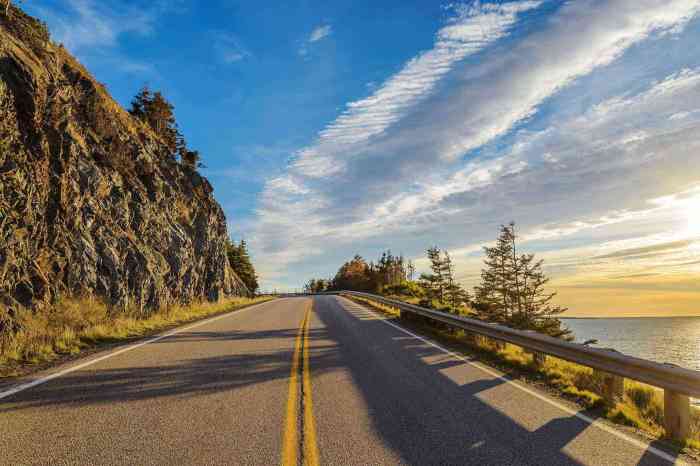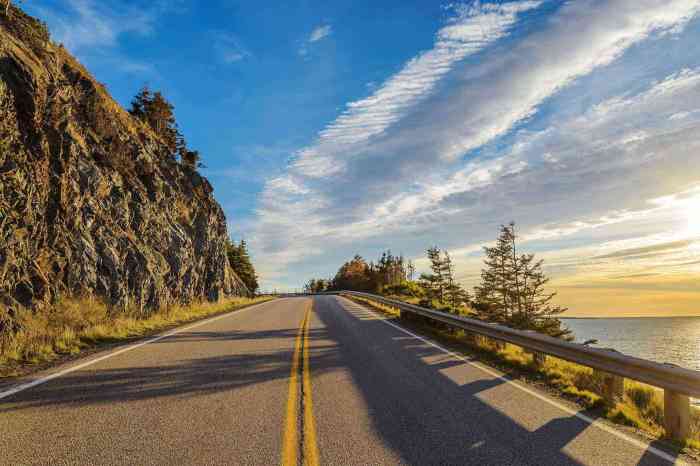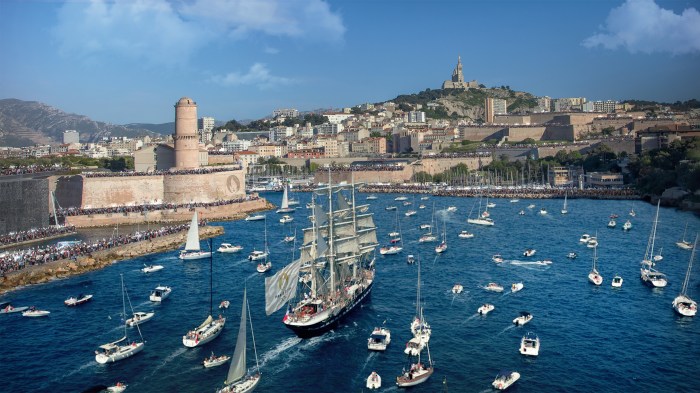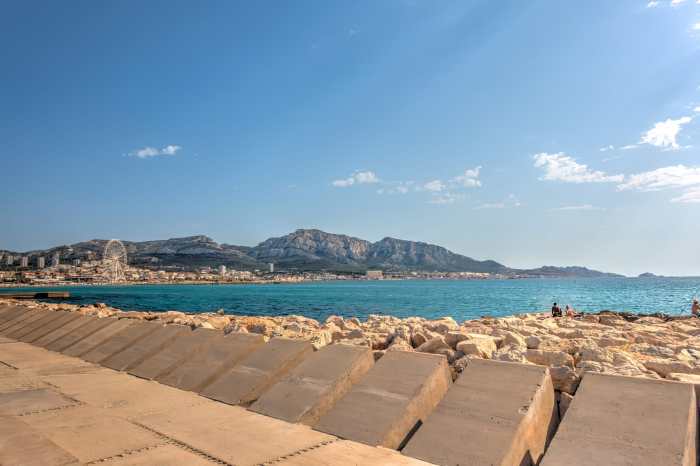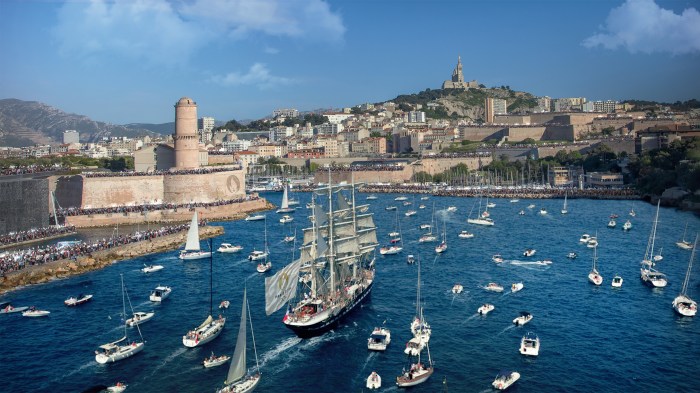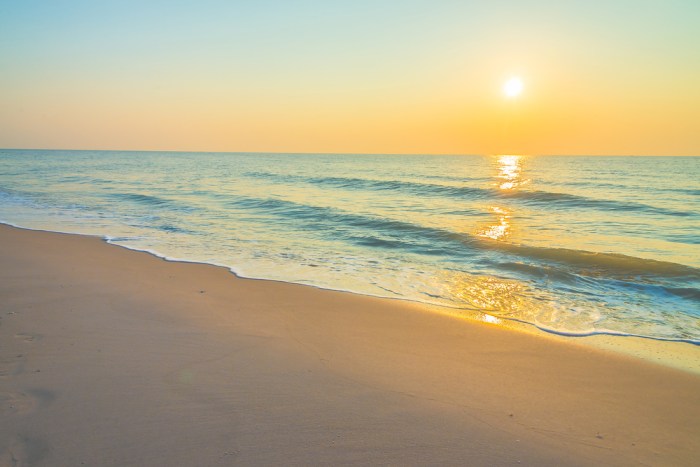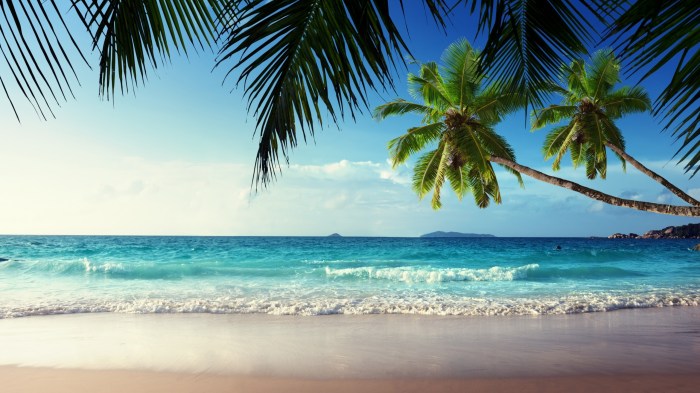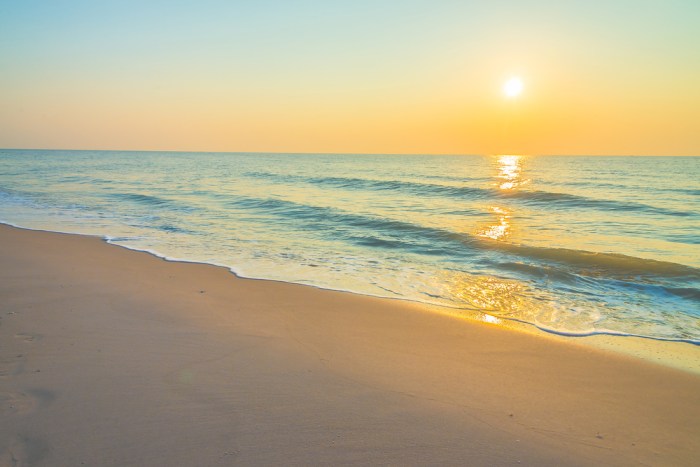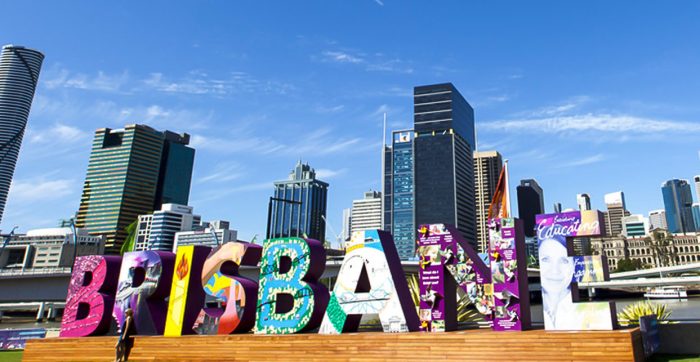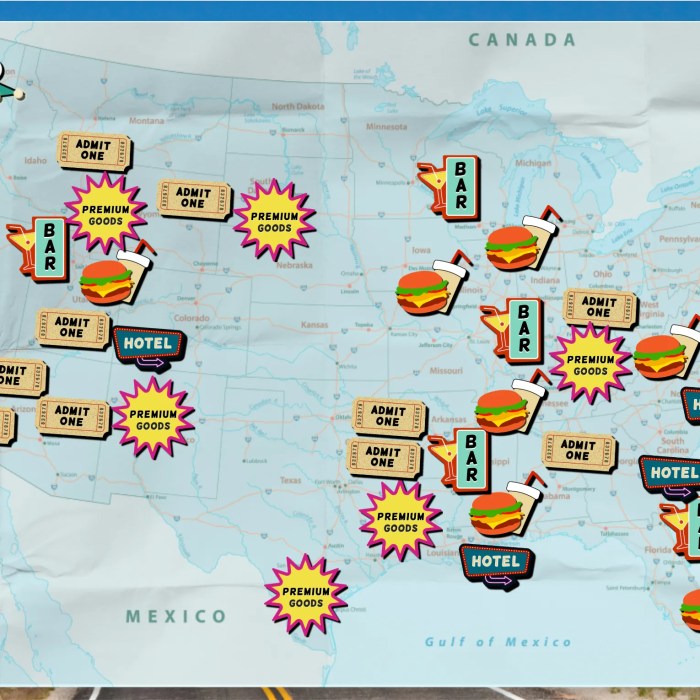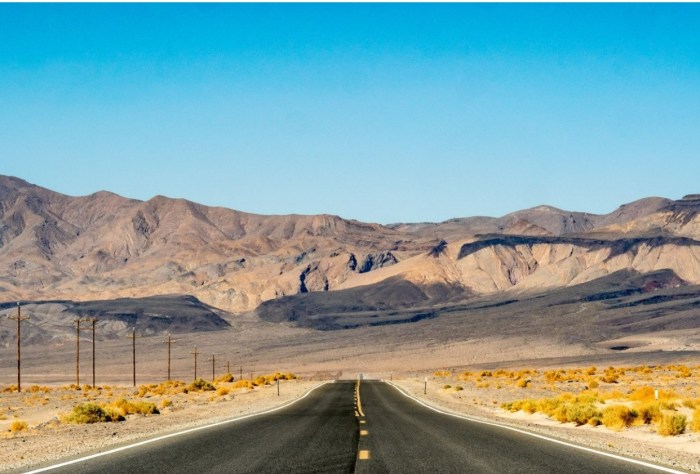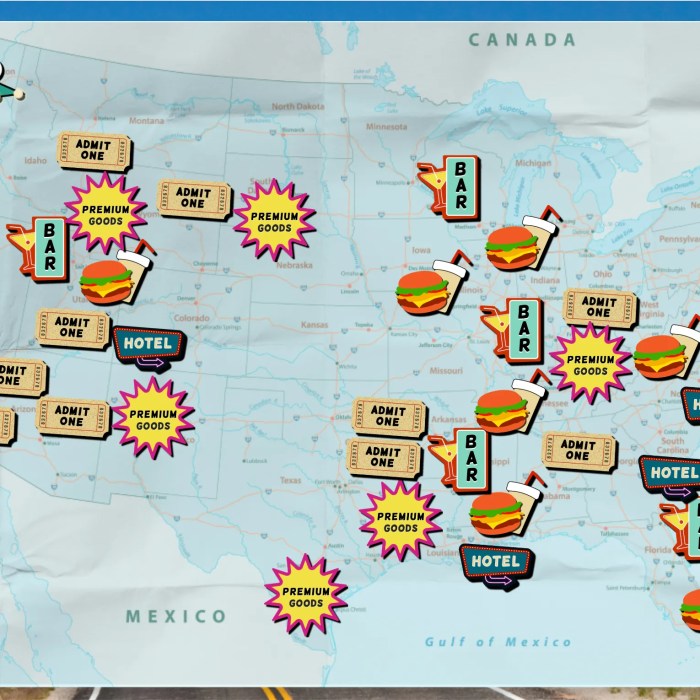Kuala Lumpur four day itinerary: Embark on a whirlwind adventure through the vibrant heart of Malaysia! This comprehensive guide unveils the city’s hidden gems, from historical landmarks to culinary delights, ensuring you maximize your four-day stay. Discover the best accommodations, transportation options, and must-see attractions. This itinerary is crafted to cater to diverse interests, offering flexibility and personalized experiences.
From the iconic Petronas Twin Towers to the bustling street food scene, Kuala Lumpur offers a rich tapestry of experiences. This detailed plan is designed to help you navigate the city efficiently, allowing you to soak in the culture and atmosphere.
Introduction to Kuala Lumpur
Kuala Lumpur, the vibrant capital of Malaysia, is a city that seamlessly blends the ancient with the modern. From towering skyscrapers piercing the sky to bustling markets overflowing with exotic scents and flavours, the city pulsates with a unique energy. A four-day itinerary allows for a taste of its diverse offerings, enabling visitors to explore its historical significance, cultural richness, and modern marvels.The city’s history is deeply intertwined with its geographical location and economic development.
Established as a tin mining centre, Kuala Lumpur rapidly evolved into a major commercial hub, leaving behind a legacy of architectural styles that reflect its multifaceted past. This evolution has shaped the city into a dynamic metropolis that proudly showcases its heritage while embracing its future.
Key Attractions
Kuala Lumpur boasts a remarkable collection of attractions, each offering a unique perspective on the city’s character. Iconic landmarks, historical sites, and cultural experiences abound, promising an unforgettable journey. These diverse attractions cater to various interests, ensuring an engaging and enriching experience for every visitor.
- Petronas Twin Towers: A symbol of modern Malaysian architecture, these iconic towers offer breathtaking panoramic views of the city. Their design and engineering represent a significant achievement in construction, drawing visitors from around the globe.
- Batu Caves: A significant Hindu shrine, Batu Caves is a testament to the city’s diverse religious heritage. The intricate cave temples and the elaborate sculptures within the caves are a captivating display of artistic skill and spiritual devotion.
- KLCC Park: This sprawling green oasis in the heart of the city provides a tranquil escape from the bustling urban environment. It offers a place for relaxation, recreation, and enjoyment of nature amidst the towering structures.
Historical Context
Kuala Lumpur’s development is deeply rooted in its historical context. From its humble beginnings as a tin mining settlement to its current status as a global metropolis, the city has witnessed remarkable transformations. Understanding its historical evolution is crucial to appreciating the present-day landscape.
- Early Settlement: The area that became Kuala Lumpur was initially a small trading post, a centre for tin mining in the late 19th century. The rapid influx of people and capital transformed it from a small settlement to a major city.
- Colonial Influence: The British colonial period had a significant impact on the city’s architecture and infrastructure. Many buildings from this era still stand today, serving as reminders of the past and contributing to the city’s unique character.
- Post-Independence Growth: Following independence, Kuala Lumpur experienced rapid economic growth and development, transforming itself into a major regional hub. This is reflected in the impressive skyline and modern infrastructure that is visible today.
Four-Day Itinerary Considerations
A four-day itinerary provides a manageable yet comprehensive overview of Kuala Lumpur. It allows for a focused exploration of the city’s key attractions while leaving room for personal interests and spontaneous discoveries.
- Day 1: Explore the iconic landmarks like the Petronas Twin Towers and KLCC Park, gaining a feel for the modern cityscape.
- Day 2: Delve into the cultural heritage of the city by visiting the Batu Caves and other religious sites. This will provide insight into the city’s diverse cultural tapestry.
- Day 3: Immerse yourself in the bustling markets, shopping districts, and cultural enclaves, experiencing the vibrant energy of the city.
- Day 4: Combine a visit to historical sites with opportunities for relaxation and reflection, culminating in a memorable farewell.
Accommodation Options
Finding the right accommodation in Kuala Lumpur is crucial for a smooth and enjoyable trip. The city offers a wide range of options, catering to diverse budgets and preferences. From luxurious stays to budget-friendly options, choosing the right fit depends on your travel style and priorities.Choosing the right accommodation balances your needs and budget. Luxury accommodations offer a premium experience, while budget-friendly options provide basic necessities at a lower cost.
Mid-range options strike a balance, offering a comfortable stay without breaking the bank.
Luxury Accommodations
Luxury hotels in Kuala Lumpur provide unparalleled comfort and amenities. These establishments often boast exceptional service, exquisite décor, and a wide array of facilities.
- The Ritz-Carlton, Kuala Lumpur: Known for its opulent rooms, impeccable service, and stunning city views, this hotel offers a truly luxurious experience. Expect top-notch dining options and impeccable service within the hotel itself.
- Four Seasons Hotel Kuala Lumpur: Renowned for its sophisticated ambiance and attentive service, this hotel provides a haven of tranquility in the heart of the city. Expect high-end dining options and a relaxed atmosphere.
The pros of luxury accommodations are obvious: unparalleled comfort, exceptional service, and premium amenities. However, the cost can be a significant factor.
Mid-Range Accommodations
Mid-range hotels in Kuala Lumpur offer a balance between comfort and affordability. These establishments typically provide well-appointed rooms, decent amenities, and convenient locations.
My Kuala Lumpur four-day itinerary is shaping up to be amazing! I’m already picturing the bustling cityscapes and delicious street food. For a change of pace, I’ve been looking into some trip ideas for island vacations, like those found on Clapboard Island. trip ideas island vacations clapboard island offer a great escape from the urban jungle, and I’m brainstorming how to weave a relaxing island break into my Kuala Lumpur trip.
Back to the itinerary though, I’m excited to explore the Petronas Towers and the Batu Caves!
- Grand Hyatt Kuala Lumpur: A popular choice, this hotel combines comfort and convenience with a wide range of dining options and a central location. The rooms are generally spacious and well-maintained, suitable for both business and leisure travelers.
- The Majestic Hotel: This hotel provides a blend of traditional charm and modern amenities, with a focus on comfort and value. It offers a variety of room types to suit various needs.
Mid-range options offer a satisfying balance of comfort and cost-effectiveness.
Planning a four-day Kuala Lumpur itinerary is exciting, but sometimes a change of pace is needed. For a family break, exploring the best family beaches in Florida, like those found at best family beaches in Florida , offers a refreshing alternative. Once you’re back, though, you can dive back into the bustling markets and temples of Kuala Lumpur for a truly memorable trip.
Budget-Friendly Accommodations
Budget-friendly accommodations in Kuala Lumpur cater to travelers seeking a basic but functional stay. These options often prioritize affordability over extravagant amenities, making them ideal for budget-conscious travelers.
- The City Lodge: A chain known for its clean and functional rooms, the City Lodge offers a comfortable and affordable stay. While the amenities might be more basic, the value proposition is strong for those on a tighter budget.
- Cititel Kuala Lumpur: This hotel provides affordable rooms with basic amenities, ideal for those prioritizing a comfortable stay without extravagant spending.
Budget-friendly options provide essential comforts at a lower cost, suitable for those prioritizing affordability over luxury.
Comparison Table
| Category | Example Hotel | Pros | Cons |
|---|---|---|---|
| Luxury | The Ritz-Carlton, Kuala Lumpur | Exceptional service, premium amenities, luxurious rooms | High cost, might not be suitable for budget travelers |
| Mid-Range | Grand Hyatt Kuala Lumpur | Comfortable rooms, decent amenities, convenient location | Limited premium amenities compared to luxury |
| Budget-Friendly | Cititel Kuala Lumpur | Affordable, basic necessities provided, suitable for budget travelers | Basic amenities, might not offer the same level of comfort as other categories |
Transportation Options: Kuala Lumpur Four Day Itinerary
Navigating Kuala Lumpur is a breeze, thanks to its well-developed transportation network. Whether you’re exploring iconic landmarks or hopping between vibrant neighbourhoods, choosing the right mode of transport can significantly impact your travel experience and budget. Understanding the pros and cons of each option is key to maximizing your four-day adventure.
Public Transport
Kuala Lumpur boasts a comprehensive public transportation system, making it a convenient and cost-effective way to get around. This system includes the efficient RapidKL system, encompassing buses and the LRT (Light Rail Transit) and MRT (Mass Rapid Transit) networks. The extensive coverage ensures you can reach most attractions and areas within the city limits without needing a car.
- Advantages: Affordable fares, extensive network, convenient for covering long distances, reduces traffic congestion stress, and is eco-friendly.
- Disadvantages: Can sometimes be crowded, especially during peak hours. Travel times can vary depending on the route and traffic conditions.
Taxis
Taxis remain a popular choice for getting around, offering a direct route and door-to-door service. While readily available, pricing can be unpredictable without prior negotiation.
- Advantages: Direct routes, convenient for short distances or when in a hurry. Some drivers are well-versed in tourist attractions and can offer recommendations.
- Disadvantages: Potentially higher costs compared to public transport, and the fare can be unpredictable without negotiation. Traffic congestion can significantly impact travel time.
Ride-Hailing Services
Ride-hailing services like Grab are extremely popular in Kuala Lumpur, offering a convenient and readily available alternative to taxis. Their availability and pricing are generally transparent, making it easier to plan your travel budget.
- Advantages: Convenient, easily accessible, competitive pricing compared to taxis, real-time tracking of driver location, and wide availability.
- Disadvantages: Pricing can fluctuate depending on demand and traffic conditions, and while generally safe, always exercise caution when using these services.
Cost and Travel Time Table
The following table provides an estimated cost and travel time between key locations using the various transport options. Please note that these are estimates and actual times may vary.
| Location A | Location B | Public Transport (RM) | Public Transport (Time) | Taxi (RM) | Taxi (Time) | Ride-Hailing (RM) | Ride-Hailing (Time) |
|---|---|---|---|---|---|---|---|
| KLCC Park | Petronas Twin Towers | ~2 RM | ~10 mins | ~15 RM | ~15 mins | ~10 RM | ~10 mins |
| KLCC Park | Bukit Bintang | ~5 RM | ~25 mins | ~20 RM | ~30 mins | ~15 RM | ~20 mins |
| KLCC Park | Batu Caves | ~10 RM | ~1 hour | ~40 RM | ~1 hour 30 mins | ~30 RM | ~1 hour |
Tourist Attractions
Kuala Lumpur, a vibrant metropolis, boasts a rich tapestry of attractions catering to diverse interests. From historical landmarks to modern marvels, a four-day trip offers ample opportunities to explore the city’s captivating offerings. This section highlights the top five must-see destinations, providing a glimpse into their history and significance.A well-planned itinerary will allow you to experience the cultural, historical, and natural gems that Kuala Lumpur has to offer.
This detailed overview will help you craft an unforgettable experience.
Iconic Landmarks
Kuala Lumpur’s skyline is dominated by iconic structures, each with a story to tell. These architectural marvels showcase the city’s progress and its commitment to modernity.
- Petronas Twin Towers: These iconic twin towers, a symbol of Malaysia’s economic growth, were completed in 1998. They represent architectural prowess and stand as a testament to human ingenuity. Their distinctive design and breathtaking height offer panoramic views of the city. Visiting the observation deck provides an unforgettable experience.
- KLCC Park: Adjacent to the Petronas Twin Towers, this sprawling green space provides a welcome respite from the bustling city. The park features a beautiful lake, walking paths, and various recreational areas, making it a popular spot for relaxation and enjoyment.
Historical and Cultural Gems
Kuala Lumpur’s historical significance is reflected in its diverse cultural heritage. These locations provide insights into the city’s past and the rich traditions of its people.
- Batu Caves: These Hindu shrines, situated just outside Kuala Lumpur, are a significant pilgrimage site. The caves, carved into a hill, are adorned with intricate sculptures and vibrant murals, offering a glimpse into the religious and cultural traditions of the area. The impressive limestone formations and the vibrant atmosphere make this a truly memorable experience. The surrounding area offers insights into the Hindu community’s practices and traditions.
- National Museum of Malaysia: This museum provides a comprehensive overview of Malaysia’s rich history, art, and culture. Visitors can explore diverse exhibits showcasing the nation’s heritage, from ancient artifacts to contemporary works. It is a valuable resource for understanding the historical development of the country and its cultural evolution.
Modern Marvels and Entertainment
These attractions highlight the city’s contemporary side and its entertainment offerings.
- Suria KLCC: This shopping mall is a popular destination for both local residents and tourists. It offers a wide array of shopping experiences, from high-end boutiques to local crafts, and is an excellent spot to experience the city’s vibrant atmosphere. The mall is known for its diverse offerings and its luxurious ambiance.
Category-Based Overview
This table summarizes the attractions by their primary category:
| Attraction | Category | Brief Description |
|---|---|---|
| Petronas Twin Towers | Iconic Landmark | Iconic twin towers, symbol of Malaysia’s economic growth. |
| KLCC Park | Iconic Landmark | Sprawling green space, recreational areas, and lake. |
| Batu Caves | Historical/Cultural | Hindu shrines, pilgrimage site, limestone caves. |
| National Museum of Malaysia | Historical/Cultural | Comprehensive museum showcasing Malaysia’s history and culture. |
| Suria KLCC | Modern Marvel/Entertainment | Shopping mall with diverse offerings. |
Food and Dining Experiences
Kuala Lumpur’s culinary scene is a vibrant tapestry woven from diverse threads, reflecting the city’s multicultural heritage. From the aromatic spices of Malaysian cuisine to the flavors of Indian, Chinese, and Western traditions, there’s a dish for every palate. The city offers a unique blend of affordable street food and Michelin-starred dining, allowing you to savor the rich culinary landscape at various price points.The city’s food culture extends beyond just the restaurants.
Hawker centers are a testament to this, serving as vibrant hubs where local delicacies are prepared and shared, offering a true taste of the local experience. The sheer variety of dishes, from the ubiquitous Nasi Lemak to the more adventurous satay, showcases the creativity and culinary artistry of the city’s people.
Local Specialties
Kuala Lumpur boasts a wealth of local specialties, each reflecting the country’s unique blend of cultures. These dishes are a must-try for any visitor seeking an authentic taste of Malaysian cuisine. Nasi Lemak, a fragrant rice dish topped with various accompaniments like peanuts, sambal, and fried anchovies, is a quintessential example. Other popular choices include satay, a grilled skewer of meat or seafood, and char kway teow, a stir-fried noodle dish with a unique flavor profile.
Roti canai, a flaky flatbread often served with curry, also deserves a mention. These dishes, and many more, are available in numerous hawker stalls and restaurants throughout the city.
Dining Options
From bustling hawker stalls to upscale fine-dining restaurants, Kuala Lumpur offers a diverse range of dining experiences. Hawker centers provide an affordable and authentic culinary adventure, allowing you to sample various dishes in a vibrant atmosphere. These centers are often a true reflection of the city’s diverse population and its culinary creativity. Alternatively, fine dining restaurants provide an elegant setting for a more sophisticated dining experience, offering a more formal atmosphere and a curated selection of dishes.
These restaurants often showcase the best of Malaysian culinary arts, employing innovative techniques and using high-quality ingredients.
Recommended Restaurants
For those seeking diverse options, here are some recommended restaurants catering to various tastes and budgets:
- For a taste of traditional Malaysian cuisine: Warung Baba (renowned for its Nasi Lemak and other local specialties)
- For a more upscale dining experience: The chef’s table at a Michelin-starred restaurant (a luxury option for the discerning diner)
- For a vibrant hawker experience: Jalan Alor (a bustling street food market, offering a wide array of dishes)
Cost and Quality Comparison, Kuala lumpur four day itinerary
The table below provides a comparison of cost and quality across different dining experiences:
| Dining Experience | Cost (Approximate) | Quality | Description |
|---|---|---|---|
| Hawker Stall | RM 10-20 (USD 2-4) per person | High | Authentic, vibrant, and affordable |
| Mid-Range Restaurant | RM 30-60 (USD 6-12) per person | Good | A variety of dishes and good service |
| Fine Dining Restaurant | RM 100+ (USD 20+) per person | Excellent | High-quality ingredients, innovative dishes, and sophisticated atmosphere |
Note: Prices are approximate and may vary depending on the specific restaurant and the dishes ordered. RM stands for Malaysian Ringgit, and USD for US Dollars.
Activities and Experiences
Kuala Lumpur offers a diverse range of activities to cater to various interests. From exploring vibrant cultural landmarks to thrilling adventure pursuits, and indulging in retail therapy, there’s something for everyone. This section details exciting experiences, duration, costs, and booking procedures, ensuring a seamless and enriching trip.This section provides a comprehensive guide to activities and experiences, helping you craft a personalized itinerary.
Planning a four-day Kuala Lumpur itinerary is exciting! I’m currently researching potential activities, and the recent transformation of Old Hong Kong Central, as seen in this fascinating article on changing face old hong kong central , is inspiring me to explore the city’s architectural evolution. Hopefully, I can incorporate some of that dynamic energy into my own Kuala Lumpur adventure.
Each activity is described with estimated duration and cost, along with the necessary booking procedures.
Cultural Experiences
Cultural experiences offer insights into the rich tapestry of Malaysian heritage. Immerse yourself in the nation’s traditions and customs through interactive tours and visits to historical sites.
- Batu Caves Tour: This iconic Hindu shrine, featuring intricate cave temples, is a must-see. A guided tour typically lasts 2-3 hours and costs around RM50-RM100 (USD10-20) per person, depending on the tour operator. Booking in advance is recommended, especially during peak seasons, through various online travel agencies or local tour operators.
- National Museum of Malaysia: Explore Malaysia’s rich history and culture at the National Museum. Allow 2-3 hours for a comprehensive visit. Entry fees are generally affordable, under RM10 (USD2) per person. No prior booking is required, but be mindful of opening hours and possible crowds.
- KLCC Park: Stroll through the lush green spaces of KLCC Park. While not a traditional cultural experience, it provides a tranquil escape from the city bustle. The visit can take 1-2 hours, and there are no entrance fees.
Adventure Activities
Thrill-seekers will find plenty of adrenaline-pumping adventures in Kuala Lumpur. From challenging climbs to exciting water sports, these activities will leave you with unforgettable memories.
- Genting Highlands Cable Car Ride: Enjoy breathtaking panoramic views of the surrounding landscape as you ascend to Genting Highlands. The ride typically takes 1-2 hours, with cable car tickets costing around RM100-RM200 (USD20-40) per person. Advance bookings are recommended, especially during peak periods, through official websites or travel agents.
- Sky Bridge at KL Tower: Experience a unique perspective of Kuala Lumpur from the elevated Sky Bridge at the KL Tower. The visit generally takes 1-2 hours, and entrance fees are approximately RM50-RM80 (USD10-16) per person. Booking in advance is recommended, as availability may be limited.
Shopping Experiences
Kuala Lumpur is a shopper’s paradise, offering a wide array of options from high-end boutiques to bustling markets.
| Shopping Destination | Estimated Duration | Estimated Cost | Booking Details |
|---|---|---|---|
| Pavilion Kuala Lumpur | 2-4 hours | Variable (depending on purchases) | No pre-booking required. |
| Suria KLCC | 2-4 hours | Variable (depending on purchases) | No pre-booking required. |
| Petaling Street Night Market | 2-4 hours (evening) | Variable (depending on purchases) | No pre-booking required. |
The cost of shopping experiences varies greatly depending on your purchasing preferences and choices.
Sample Itinerary Options
Kuala Lumpur offers a vibrant tapestry of experiences, catering to diverse interests. From bustling markets to serene temples, and delicious street food to iconic skyscrapers, this vibrant city has something for everyone. To help you plan your trip, here are three distinct four-day itineraries, each designed to maximize your time and offer unique perspectives on Kuala Lumpur.
Itinerary Options for Different Interests
These itineraries provide a framework for your Kuala Lumpur adventure. Feel free to adjust the timings and activities based on your preferences and pace.
Itinerary 1: Cultural Immersion
This itinerary focuses on experiencing Kuala Lumpur’s rich cultural heritage, from ancient temples to vibrant local markets.
| Day | Time | Activity | Location |
|---|---|---|---|
| Day 1 | Morning (9:00 AM – 12:00 PM) | Visit the Batu Caves | Batu Caves |
| Day 1 | Afternoon (1:00 PM – 5:00 PM) | Explore the vibrant Chinatown | Chinatown |
| Day 1 | Evening (6:00 PM – 9:00 PM) | Enjoy a traditional Malaysian dinner at a local restaurant. | Chinatown |
| Day 2 | Morning (9:00 AM – 12:00 PM) | Explore the Islamic Arts Museum Malaysia. | Islamic Arts Museum Malaysia |
| Day 2 | Afternoon (1:00 PM – 5:00 PM) | Visit the National Museum of Malaysia. | National Museum of Malaysia |
| Day 2 | Evening (6:00 PM – 9:00 PM) | Enjoy a traditional Malaysian dinner at a local restaurant. | KLCC area |
| Day 3 | Morning (9:00 AM – 12:00 PM) | Visit the Merdeka Square and KLCC Park. | Merdeka Square and KLCC Park |
| Day 3 | Afternoon (1:00 PM – 5:00 PM) | Explore the Petronas Twin Towers. | KLCC |
| Day 3 | Evening (6:00 PM – 9:00 PM) | Enjoy dinner with a view at a restaurant near KLCC. | KLCC |
| Day 4 | Morning (9:00 AM – 12:00 PM) | Visit the Royal Selangor Club and explore the nearby area. | Royal Selangor Club |
| Day 4 | Afternoon (1:00 PM – 5:00 PM) | Shopping at Bukit Bintang. | Bukit Bintang |
| Day 4 | Evening (6:00 PM – 9:00 PM) | Farewell dinner at a restaurant of your choice. | Bukit Bintang or KLCC |
Itinerary 2: Foodie Adventure
This itinerary focuses on savoring the diverse culinary scene of Kuala Lumpur, from hawker centers to Michelin-starred restaurants.
| Day | Time | Activity | Location |
|---|---|---|---|
| Day 1 | Morning (9:00 AM – 12:00 PM) | Explore the local markets for breakfast. | Local Markets |
| Day 1 | Afternoon (1:00 PM – 5:00 PM) | Sample street food at a hawker center. | Central Market |
| Day 1 | Evening (6:00 PM – 9:00 PM) | Enjoy dinner at a restaurant specializing in Malaysian cuisine. | Jalan Alor |
| Day 2 | Morning (9:00 AM – 12:00 PM) | Explore the local markets for breakfast. | Local Markets |
| Day 2 | Afternoon (1:00 PM – 5:00 PM) | Sample local delicacies at a renowned restaurant. | KLCC area |
| Day 2 | Evening (6:00 PM – 9:00 PM) | Dinner at a restaurant featuring modern Malaysian cuisine. | KLCC area |
| Day 3 | Morning (9:00 AM – 12:00 PM) | Visit the local market for breakfast and explore the surrounding area. | Central Market |
| Day 3 | Afternoon (1:00 PM – 5:00 PM) | Explore more hawker centers. | Local Hawker Centers |
| Day 3 | Evening (6:00 PM – 9:00 PM) | Enjoy dinner at a restaurant specializing in your preferred cuisine. | Bukit Bintang |
| Day 4 | Morning (9:00 AM – 12:00 PM) | Explore the local markets for breakfast and last-minute souvenir shopping. | Local Markets |
| Day 4 | Afternoon (1:00 PM – 5:00 PM) | Enjoy a farewell lunch at a restaurant of your choice. | Bukit Bintang |
| Day 4 | Evening (6:00 PM – 9:00 PM) | Farewell dinner at a restaurant of your choice. | Bukit Bintang or KLCC |
Itinerary 3: Shopping and Entertainment
This itinerary prioritizes shopping and entertainment, from high-end boutiques to vibrant nightlife.
| Day | Time | Activity | Location |
|---|---|---|---|
| Day 1 | Morning (9:00 AM – 12:00 PM) | Explore the Bukit Bintang shopping area. | Bukit Bintang |
| Day 1 | Afternoon (1:00 PM – 5:00 PM) | Lunch and relaxation at a cafe in Bukit Bintang. | Bukit Bintang |
| Day 1 | Evening (6:00 PM – 9:00 PM) | Enjoy dinner and explore the nightlife at Bukit Bintang. | Bukit Bintang |
| Day 2 | Morning (9:00 AM – 12:00 PM) | Explore the Suria KLCC shopping mall. | Suria KLCC |
| Day 2 | Afternoon (1:00 PM – 5:00 PM) | Shopping at Pavilion KL. | Pavilion KL |
| Day 2 | Evening (6:00 PM – 9:00 PM) | Enjoy dinner and entertainment at a restaurant near Bukit Bintang. | Bukit Bintang |
| Day 3 | Morning (9:00 AM – 12:00 PM) | Visit the Kuala Lumpur Tower for panoramic views. | Kuala Lumpur Tower |
| Day 3 | Afternoon (1:00 PM – 5:00 PM) | Shopping at the Mid Valley Megamall. | Mid Valley Megamall |
| Day 3 | Evening (6:00 PM – 9:00 PM) | Enjoy dinner and a movie at a cinema. | Bukit Bintang |
| Day 4 | Morning (9:00 AM – 12:00 PM) | Last-minute souvenir shopping. | Bukit Bintang |
| Day 4 | Afternoon (1:00 PM – 5:00 PM) | Enjoy a farewell lunch at a restaurant of your choice. | Bukit Bintang |
| Day 4 | Evening (6:00 PM – 9:00 PM) | Farewell dinner at a restaurant of your choice. | Bukit Bintang or KLCC |
Budget Considerations

Planning a trip to Kuala Lumpur requires a realistic budget. Understanding the costs associated with accommodation, transportation, food, and activities is crucial for a smooth and enjoyable experience. This section provides a breakdown of estimated costs and strategies to help you make the most of your budget while exploring the vibrant city.
Accommodation Costs
Accommodation options in Kuala Lumpur range from budget-friendly hostels to luxurious hotels. A mid-range hotel room for a double occupancy, in a central location, can cost approximately RM 250-500 (USD 50-100) per night. Hostels, a popular choice for budget travelers, usually cost between RM 50-150 (USD 10-30) per night. Airbnb options can also offer competitive rates, depending on the location and amenities.
Consider booking in advance, especially during peak season, to secure the best deals.
Transportation Costs
Kuala Lumpur offers various transportation options. The LRT (Light Rail Transit) and MRT (Mass Rapid Transit) are efficient and affordable ways to get around the city. A single trip on the LRT or MRT typically costs RM 2-3 (USD 0.40-0.60). For longer distances or exploring areas outside the city center, taxis and Grab cars are readily available, but costs can vary depending on the distance.
Consider using ride-sharing apps for cost-effectiveness and convenience. Public transportation is the most budget-friendly option for exploring the city.
Food and Dining Costs
Kuala Lumpur’s culinary scene is diverse and affordable. Street food, a popular choice for budget travelers, ranges from RM 5-15 (USD 1-3) per meal. Mid-range restaurants offer a wider variety of dishes at prices between RM 20-50 (USD 4-10) per person. For fine dining experiences, expect to pay significantly more, possibly RM 100+ (USD 20+) per person.
Exploring local markets and hawker centers provides excellent opportunities for affordable and delicious meals.
Activity Costs
Kuala Lumpur offers a plethora of free activities, such as exploring parks, visiting temples, and strolling through the city center. Paid activities, like visiting theme parks or museums, can vary in cost. Admission fees for popular attractions can range from RM 10-50 (USD 2-10) per person. Consider purchasing a city pass or tourist pass if you plan to visit several attractions to potentially save money.
Consider free activities to keep costs down, while still enjoying the city.
Sample Itinerary Costs Comparison
| Itinerary Option | Accommodation (4 nights) | Transportation | Food | Activities | Total Estimated Cost (RM) |
|---|---|---|---|---|---|
| Budget-Friendly | RM 1200 (USD 240) | RM 400 (USD 80) | RM 1200 (USD 240) | RM 400 (USD 80) | RM 3200 (USD 640) |
| Mid-Range | RM 2000 (USD 400) | RM 600 (USD 120) | RM 1600 (USD 320) | RM 800 (USD 160) | RM 5000 (USD 1000) |
| Luxury | RM 4000 (USD 800) | RM 800 (USD 160) | RM 2400 (USD 480) | RM 1200 (USD 240) | RM 8400 (USD 1680) |
Saving Money Strategies
- Travel during the off-season: Prices for accommodation, flights, and attractions are often lower during shoulder seasons or weekdays, compared to peak season or weekends.
- Book accommodations and flights in advance: This can often secure better deals and discounts. Use travel aggregators to compare prices and find the best options.
- Take advantage of free activities: Explore parks, museums with free days, and local markets. Many of these offer incredible cultural experiences without costing a dime.
- Eat at local hawker centers and street food stalls: These offer authentic and affordable meals.
- Utilize public transportation: It’s often the most economical way to get around the city.
Tips and Advice
Planning a trip to Kuala Lumpur can be incredibly rewarding, but a little preparation goes a long way in ensuring a smooth and enjoyable experience. From navigating the city’s vibrant culture to understanding essential local customs, these tips will help you make the most of your four-day adventure.This section provides practical advice for navigating the city’s unique blend of modern amenities and traditional values, ensuring your trip is safe, respectful, and unforgettable.
It covers vital aspects like visa requirements, currency exchange, and local etiquette, along with helpful phrases to enhance your interactions with locals.
Visa Requirements
Visa requirements vary depending on your nationality. It’s crucial to check the official website of the Malaysian Immigration Department for the most up-to-date information. Many nationalities can enter Malaysia visa-free for tourism stays of up to 30 days. Ensure you have all necessary documentation, including a valid passport with sufficient validity beyond your intended stay, to avoid any unforeseen delays at the airport.
Currency Exchange
The Malaysian Ringgit (MYR) is the official currency. While major hotels and tourist areas may accept foreign currencies, it’s generally recommended to exchange currency at banks or authorized exchange bureaus for the best exchange rates. Bringing some cash in MYR is advisable for smaller purchases and transportation. Also, be aware of ATM fees and exchange rate fluctuations to manage your spending effectively.
Local Customs
Malaysia is a multicultural nation with a rich tapestry of traditions. Respecting local customs is vital for a positive experience. Dress modestly when visiting religious sites, such as mosques or temples. Removing your shoes before entering homes or some religious places is a common practice. Always be mindful of the local culture and show respect to ensure a smooth and respectful interaction.
Navigating the City
Kuala Lumpur boasts an efficient public transportation system. The Rapid KL system, including the LRT and MRT, is a cost-effective way to travel between different areas. Taxis and ride-hailing services are readily available, but it’s wise to use reputable services and agree on a fare beforehand to avoid any misunderstandings.
Useful Phrases
Learning a few basic phrases in Malay can significantly enhance your interactions with locals. Here are some essential phrases:
- Selamat pagi (Good morning)
- Selamat siang (Good afternoon)
- Selamat malam (Good evening)
- Terima kasih (Thank you)
- Permisi (Excuse me)
- Berapa harga? (How much is it?)
These phrases will demonstrate your respect and make your interactions more enjoyable. Knowing these basic phrases can go a long way in facilitating smooth communication and creating positive impressions.
Final Thoughts
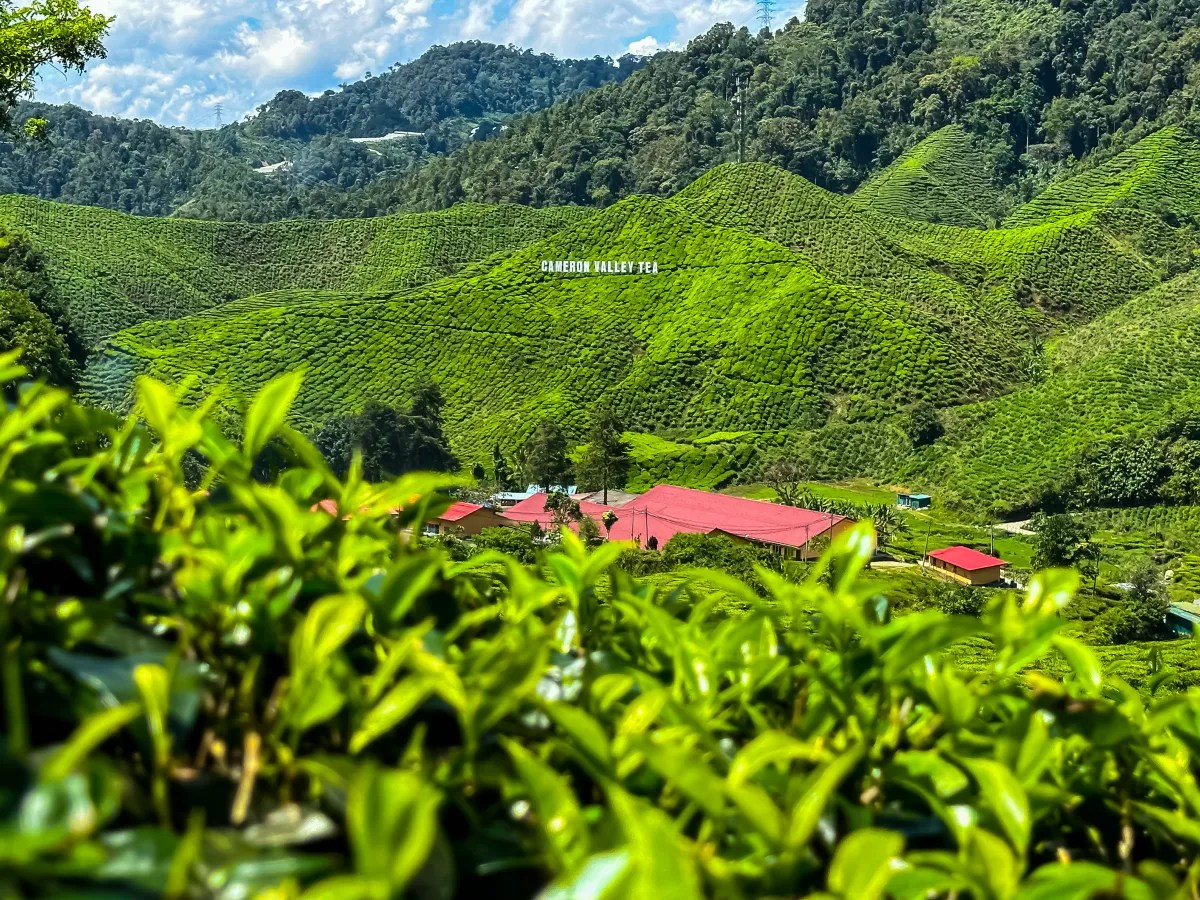
This Kuala Lumpur four day itinerary is your roadmap to an unforgettable journey. Whether you’re a history buff, a foodie, or an adventure seeker, this guide will equip you with the knowledge and resources to create a truly personalized experience. From choosing the perfect accommodation to savoring local delicacies, this detailed plan will leave you feeling prepared and excited to explore Malaysia’s captivating capital.
Get ready for an amazing trip!
